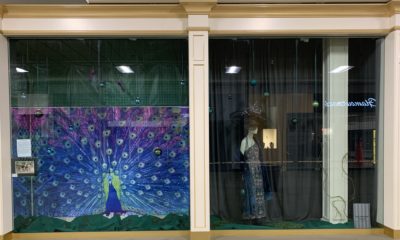THE RECENT DECADE has seen the evolution of the Indian retail sector with the entry of many Indian and global corporates in the arena. The growth in the middle class and the disposable income and young shopper segment has helped growth in this sector, which according to India Brand Equity Foundation, is pacing at a compounded annual growth rate of 13 percent and is expected to reach U.S. $1.1 trillion by 2020.
Interestingly, according to Boston Consulting Group and Retailers Association of India, about 88 percent of the contribution is from traditional retail. Though corporate retail is growing at 21 percent, traditional retail today is clocking a healthy 10 percent. The top management in traditional retail, manned by the owners across generations, has decades of understanding consumers across generations, enabling them to deliver exemplary personalized customer service. This domain, dominated by traditional big box stores, is seeing the next generation taking over the business, blending modern technology, analytics and retail design to stay relevant and appealing amidst strong competition from corporate retail. Their stores continue to generate sales that would put any corporate department store to shame. Most of the big box traditional stores, estimated to be more than 200, are located in south India and still dominate the areas they are located in.
Housed in buildings that are owned and built to suit the retailer, they command high margins and revenues generated from huge footfalls driven by mega-events endorsed by regional movie stars. These events enable them to make significant capital investments in real estate, store design and customer experience. A practice of providing accommodation to their staff, most of whom are from villages, has helped them maintain enviably high loyalty and low attrition. The traditional initiative of organizing complimentary mass transportation for prospective customers from neighboring towns and villages has enables much higher footfalls and conversions. Here are some amazing examples that still rock the boat of corporate retail in regions they dominate:
Mall of Mass Appeal
Founded by four traditional retail veterans, Venkateswarlu, Rajamouli, Satyanarayana, and Prasada Rao, more than three decades ago, today South India Shopping Mall is a chain of about 20 big box traditional stores in the south Indian states. Their stores, ranging from 60,000 to more than 100,000 square feet in size, serve generations of customers with a range of more than a quarter million pieces of merchandise of ethnic Indian wear, sarees, accessories and popular western brands. The interior design is influenced significantly by traditional Indian design cues interpreted in modern forms. A 3500-square-foot installation of 6-inch-by-4-inch aluminum plates suspended individually over an LED wall housing a 25-foot-wide digital screen creates a storefront that delivers theatric appeal to entice its consumers.

Advertisement
Wooed by Weavers
Pothys, known as “Aalayam (the place where GOD resides) of silk,” was established in 1923 to sell cotton sarees and dhotis (ethnic wrap around the waist) woven on heritage looms owned by a family of weavers. In 1977, the brand set up its first retail store, which has evolved into a chain of 15-plus stores managed by the third generation of the founder Pothy Moopanar. They operate department stores spread across 100,000 square feet and stretching six to eight floors. The offerings include sarees, ethnic wear, dhotis, men’s wear, wedding wear, kid’s wear, and casual wear, with each floor dedicated to a category. Roughly 200 sales staff are multilingual in local languages and offer personalized service in the local cultural style to every customer. A unique queue-busting billing system enables customers to select products from any floor, have the sales staff transport them to the main cash desk on the ground floor, via unmanned good lifts, where they are kept packed and ready for payment and delivery.

A Tall Story to Sell
Chennai Silks, founded in 1962 by Kulandaivel Mudaliar as a textile manufacturer, opened its first store in 1991. Starting as Kumaran Silks, it was later renamed as the (now famous) Chennai Silks. Today, the brand has grown to a network of more than 26 large-format family stores across the south of India and owns a distribution channel for Indian ethnic fashion to the U.S. and Europe. They also own a very successful chain of large jewelry stores in markets where they are present. Their department stores, which usually range from eight to 10 floors, are known to be built using premium materials to give their customers, who hail from all economic strata, a memorable, aspirational experience. They were entered into the Guinness Book of World Records for creating the world’s most expensive saree priced at $100,100, which was created by master craftsmen. The saree was designed from reproductions of 11 paintings by the celebrated Indian artist Raja Ravi Varma and was crafted from diamonds, emeralds, rubies, sapphires, topaz and pearls, with embroidery in gold, platinum and silver, thus demonstrating the retailer’s expertise in blending textiles and jewels.

Advertisement
Unboxing a Big Future Ahead
Today, traditional big box retailers are leveraging their head start of decades and decades of serving millions of culturally sensitive Indian consumers with technology and experiential service to unbox greater value in their shopping environments both offline and online. The clear lines between traditional retail and corporate retail are blurring at many points; this is clear from their influence in the transformation of marketplaces deep in regional and smaller towns across India. Thanks to this transformation, every consumer across the vast geography of India can be assured of a big future ahead in terms of experiential shopping choices.

 Photo Gallery3 days ago
Photo Gallery3 days ago
 Headlines1 week ago
Headlines1 week ago
 Sector Spotlight2 weeks ago
Sector Spotlight2 weeks ago
 Headlines1 week ago
Headlines1 week ago
 Headlines4 days ago
Headlines4 days ago
 Headlines2 weeks ago
Headlines2 weeks ago
 Designer Dozen1 week ago
Designer Dozen1 week ago
 Headlines2 days ago
Headlines2 days ago























